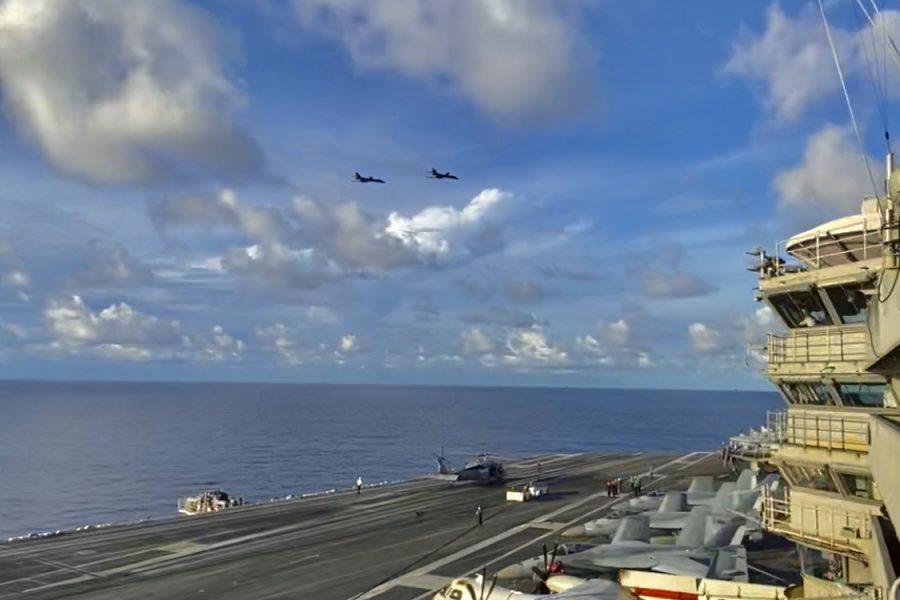Two B-1B Lancers flew over a U.S. Navy carrier strike group and then over the South China Sea on July 21, about one week after the U.S. State Department issued a statement calling China’s efforts to control resources in the contentious waters “completely unlawful.”
The bombers, which are assigned to the 37th Expeditionary Bomb Squadron but are deployed to Andersen Air Force Base, Guam, as part of a bomber task force, flew a 14-hour mission in which they integrated with the USS Ronald Reagan Carrier Strike Group in the Philippine Sea on a route that went through the South China Sea. KC-135s from the 506th Expeditionary Air Refueling Squadron supported the bombers.
“The BTF construct provides the flexibility for our bombers to operate in any area of responsibility and enhances our readiness,” Lt. Col. Lincoln Coleman, commander of the 37th EBS, said in a Pacific Air Forces release. “It gives us the ability to project air power across the globe.”
The USS Ronald Reagan has been conducting freedom of navigation operations in the South China Sea, including a dual-carrier operation alongside the USS Nimitz earlier this month. In response, China’s People’s Liberation Army Southern Theater Command conducted drills in which JH-7 bombers and J-11B fighter jets fired at targets at sea in the region, the South China Morning Post reported.
Defense Secretary Mark T. Esper, speaking during a July 21 video conference, said the U.S. military will keep up its pace of navigation operations in the region, which in 2019 reached its highest level in the 40-year history of the freedom of navigation operations program.
Esper also said the U.S. rejects China’s “excessive and unlawful” claims to the area.
